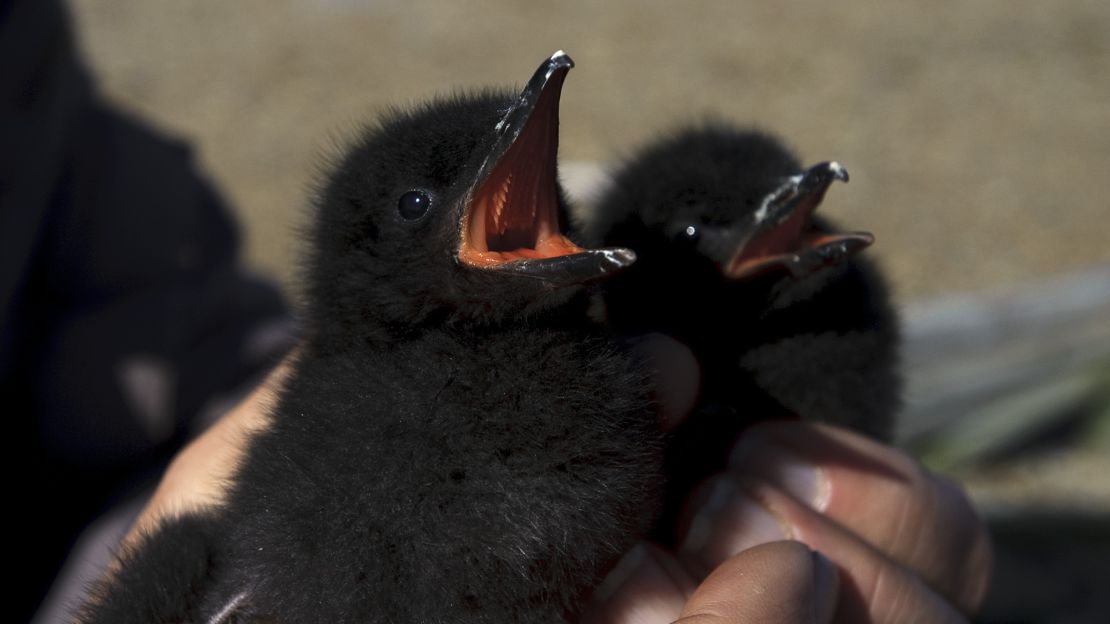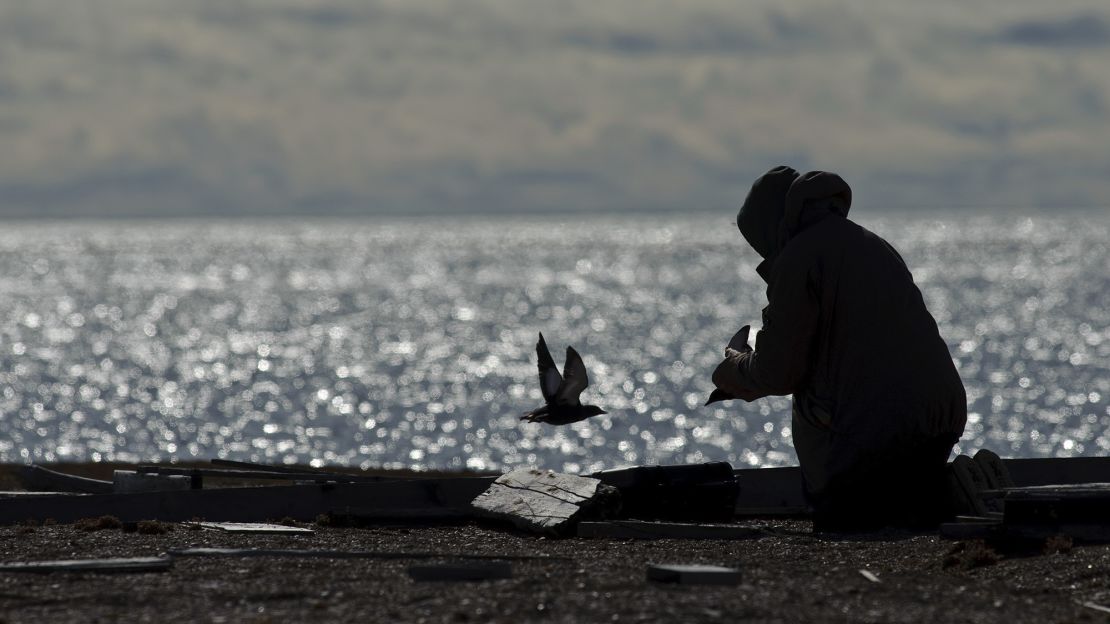Editor’s Note: John D. Sutter is a columnist for CNN Opinion who focuses on climate change and social justice. Follow him on Snapchat, Facebook and email. The opinions expressed in this commentary are his.
Every year about this time, there’s a news story that irks the scientist George Divoky:
The Arctic has hit its summer sea ice minimum for the year …
This year tied with 2007 as having the second smallest ice extent ever recorded …
At its low point … Arctic sea ice covered just 1.6 million square miles …
For more than four decades, Divoky has spent his summers (mostly alone) on Cooper Island, north of the Alaska coast. He’s watched the Arctic melt, and he’s seen how those changes have devastated the black guillemot, a tiny bird he studies.
He doesn’t like to see this monumental shift in the Arctic reduced to a matter of square miles or kilometers, as it of course was last week when the US National Snow and Ice Data Center announced Arctic sea ice hit a near-record minimum on September 10.
To him, it’s about the dead birds he has to pluck from their nests and carry in his pockets. It’s about the polar bears that now swarm his camp looking for food. It’s about the fact an island once surrounded by ice is now surrounded by the sea.
“It’s always looked at as being a physical loss,” he told me. “No one thinks about the (biological world).”
It’s an apt point, especially during a year that’s poised to be the hottest on record. The consequences of climate change extend far beyond temperature thresholds and miles of sea ice lost. An Alaskan village I visited in 2009 recently voted to relocate because the permafrost is melting out from beneath it. Indian farmers are committing suicide amid drought. Scientists have attributed the deadly floods that ravaged Louisiana this summer to human-caused warming. And, shockingly, warming is fueling the “sixth extinction” in Earth’s history, in which paleoecologists like Anthony Barnosky, of Stanford, say three-quarters of species could disappear.

Scientists say the Arctic could be free of sea ice in the summer by midcentury or sooner. “Regardless of when, it will be a profound climate shift,” said Julienne Stroeve, a senior research scientist at the US National Snow & Ice Data Center.
Few of us see these dramatic changes firsthand the way Divoky does, though.
If we did, we’d realize climate change is about far more than numbers.
It’s actually dismantling the living world.
Take Divoky, 70, and his birds. Black guillemots are faintly iridescent sea birds that can dive 30 meters (nearly 100 feet) beneath the surface of Arctic waters in search of food for themselves and for their chicks. When Divoky, who has a Ph.D. in animal biology from the University of Alaska Fairbanks, started studying these birds in the 1970s, he was working on a federal contract. He wasn’t interested in climate change. Warming just happened to happen while he was there. Surprised by what he saw – Arctic sea ice this year was just two-thirds the 1981-to-2010 average – he devoted his life to monitoring this one bird on this one island, hoping his research would help the rest of us understand the consequences of a warming world.
“I never thought about a day in the future when I would be able to be on the island and see no ice at all,” he said.
The reason warming matters for black guillemots is simple: They eat Arctic cod, and Arctic cod like cold waters, particularly those covered by sea ice. As the summer sea ice has retreated from Cooper Island, so, too, have the cod, Divoky said. That means birds come back to their nests without food, or with other food sources that aren’t as nutritious.
In the late 1980s, there were 200 pairs of nesting birds on Cooper Island. This year, Divoky counted only 100.
“You get very anxious and depressed” watching this unfold, he said. “It’s like being in an animal shelter where you (thought) the animals were always adopted in the past, and now you realize they have to be euthanized.”
The black guillemot isn’t at risk for extinction yet. There are colonies in Russia, for example. But the trend line is scary. Divoky, whose work is funded largely by donations to his non-profit, Friends of Cooper Island, has what he calls the longest running data set on how climate change affects an Arctic species.
It’s unlikely the missing birds are simply moving to other locations.
“Seabirds have extreme fidelity to their nest sites. For Black Guillemots nest site fidelity is greater than 95% with colony fidelity (at) nearly 100%,” Divoky said. “Approximately 10% of the breeding birds die each winter … The declines in the colony have come about due to lack of recruits to replace the birds lost over the winter.”
On the island, only about half as many chicks are surviving as would under normal climate conditions. The birds also lay eggs earlier and mature birds weigh 220 grams now, he said, instead of 320 grams, as they did in the past.

“I would love it if things turned around, or somehow the population increased,” Divoky told me. “Every year starts out with this great deal of hope. You see (the birds) courting and head-bobbing. You see them laying eggs – this is the whole springtime rejuvenation. The eggs hatch, the chicks are really cute. But then some of them start dying, and that was something I never saw at any level for the first quarter-century of the study. Seeing it now is very disturbing.”
Other research offers frightening clues about the biological consequences of Arctic melting, too. Jan van Gils, from the Royal Netherlands Institute for Sea Research, has shown a migratory bird, the red knot, actually is shrinking in body size because of warming. Brendan Kelly, from the International Arctic Research Center at the University of Alaska Fairbanks, told me that ringed seals are struggling to make snow-and-ice caves for their young because the Arctic is warming so fast.
“I’m out here measuring eggs and weighing chicks and this is like being below deck on the Titanic,” Divoky said.
“This is very serious. Things are not meant to change this rapidly in nature.”
Get our free weekly newsletter
Melting has changed Divoky’s strategy for living in this harsh, remote environment, too. He built a polar bear fence because those animals are coming ashore more frequently as the sea ice, where they like to hunt, continues to melt. And while he used to be able to rely on “multiyear ice” for drinking water, now he has to cart freshwater in with him.
It can be hard for Divoky to convey the genuine sense of alarm he feels.
The Arctic is warming twice as fast as the rest of the planet. Entire ecosystems are changing. It drives him crazy that many people talk about climate change in a cool-calm-collected way, like it’s some subtle, future happening.
He knows well that these shifts are dramatic and they’re now.
“It really is a train wreck you can’t look away from.”
Yet, we usually do.






